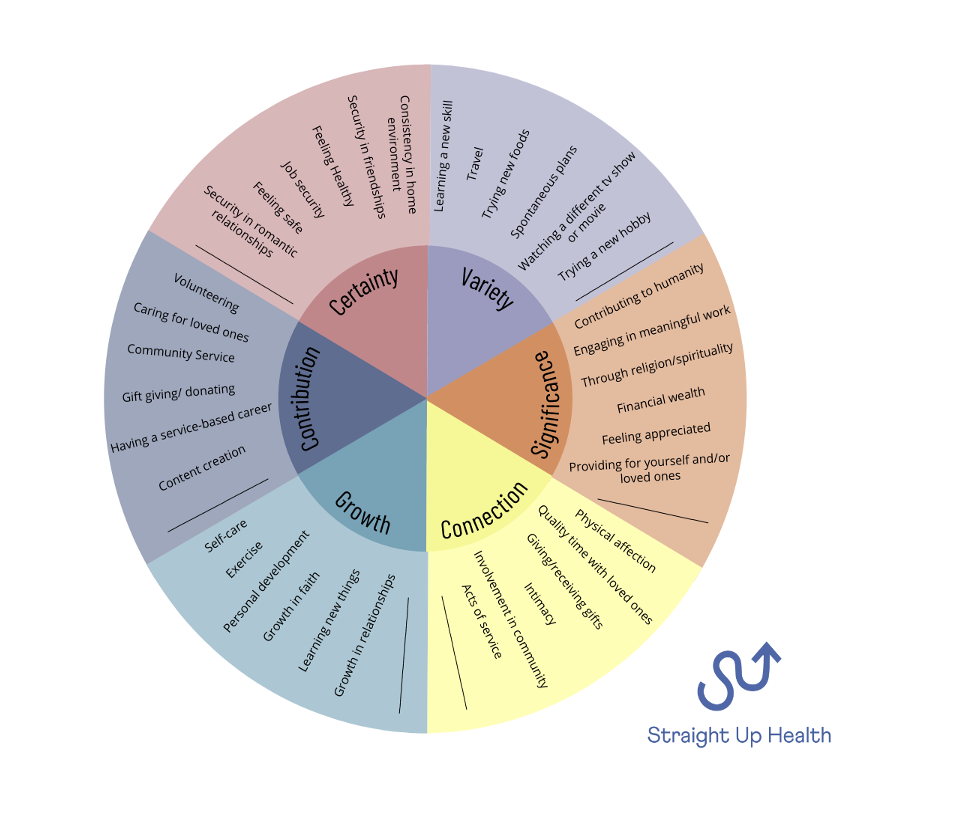Navigating the Transition from Grade 12 to Post-High School Life
With summer just around the corner, this time of year marks both an end and a beginning for those graduating high school. If you are nearing the end of grade 12 - this blog is for you! The transition from Grade 12 to post-high school life is often exciting, but can also be nerve-wracking. Transitions can create and perpetuate stress. Therefore, the goal is to help you understand your stress and provide some tips to help manage it.
What is Stress?
The World Health Organization defines stress as a state of worry or mental tension caused by a difficult situation. Stress is a natural human response that prompts us to address challenges and threats in our lives. Everyone experiences stress to some degree. While stress can be a protective factor, it also has the potential to be harmful to our wellbeing. When faced with a stressor we may experience emotional responses (i.e. nervousness, excitedness, insecurity, fear), thought responses (i.e. “what if” thoughts or overthinking), behavioral responses (i.e. avoidance or change in sleep patterns), and/or body responses (i.e. somatic symptoms such as headaches, nausea, or physical tension). Recognizing our stress responses allows us to utilize our best strategy to combat stress - prevention!
Transition Stressors
When transitioning from grade 12 to post-high school life, some common stressors that may be experienced include uncertainty, change, rejection, comparison, overwhelm, and internal and external pressure. This is far from an exhaustive list of transition related stressors but we see these come up often during transitions. Below are some tips for managing these common stressors.
Managing Transitions: Uncertainty and Change
No matter what your hopes or plans are for after grade 12, be it taking time off, traveling, getting a job, or pursuing post-secondary education - uncertainty and change will likely come up. One tip for managing stress related to uncertainty and change is to focus on what you can control. We can utilize our worried thoughts to engage in productive action. For example, if you are moving away from home for post-secondary education and worried about making friends, you can take productive action by looking up ways to get involved on campus to meet people.
Worried Thought: What if I don’t make any friends?
Productive Action: Look up ways to get involved on campus.
Try it out! Identify a worried thought that is coming up for you and come up with three attainable productive actions you can take to feel in control!
Managing Stress: Rejection
Applied to a job but never heard back? Not accepted to your top university choice? Ideal roommate chose to live with someone else? Rejection is a stressor that can make you feel badly about yourself. One tip for managing rejection is to be mindful of thinking traps. Thinking traps are irrational beliefs that contribute to uncomfortable emotions and unwanted behavior. There are lots of different types of thinking traps. Some thinking traps that may come up in response to rejection include:
Overgeneralization: Making broad interpretations from a single or few events.
All-or-Nothing Thinking: Thinking in absolutes such as “always”, “never”, or “every”.
For example, if you applied to a job and got rejected, you may experience overgeneralization (i.e. “No one will ever hire me”) or all-or-nothing thinking (i.e. “I always get rejected”). Identifying thinking traps allows us to challenge unhelpful thoughts and replace them with more accurate ones.
Try it out! Next time you have a negative thought take a moment to consider if the thought is accurate or if a thinking trap may be present.
Managing Stress: Comparison
Theodore Rososevelt famously stated, “Comparison is the thief of joy”. It is human to compare ourselves to each other but oftentimes it creates stress. After graduating from high school, you may find yourself comparing what you are doing to what your peers are doing. It is important to remember that every individual is on their own path - there is no right or wrong, good or bad, or superior or inferior path.
One tip for managing stress from comparison is creating boundaries for yourself on social media. Social media does not reflect reality and can be a breeding ground for stress if we compare our lives to the curated depictions of others we see online. Limiting time on social media or unfollowing accounts that don’t make you feel good can be simple ways to manage stress.
Try it out! Design your ideal social media feed. What messages would you see on your feed? Which accounts would you follow?
Managing Stress: Overwhelm
As you transition to post-high school life, you may find yourself juggling more and/or different responsibilities than you are used to. You may experience stress as a result of overwhelm. Our tip for managing stress resulting from overwhelm is to focus on creating and maintaining balance in your daily life. We can create balance in our lives by ensuring we include five main areas of wellness into our lives. The wellness areas are as follows:
Connection - In person connection with others.
Sleep Hygiene - Allows the brain and body to recover from the day.
Down Time - Quiet Reflection.
Active Time - Movement.
Focus Time - For brain connections, deep focus on a task.
Play Time - Spontaneity and creativity.
(source: adaptation of The Healthy Mind Platter created by Dr. Daniel J. Siegel in collaboration with Dr. David Rock).
Try it out! Write an action plan for how you will incorporate each of the above areas of wellness into your week.
Managing Stress: Internal and External Pressure
During this transition you may also experience internal and external pressure. That is, pressure put on you by both yourself and others. Both internal and external pressure can cause stress. For example, you may feel pressure from your peers, your parents, and even yourself to choose certain paths after graduating and these paths may all differ. To manage stress from pressure we recommend setting boundaries with others and identifying and prioritizing your own needs. In the example above, this may look like asking you friends and parents to refrain from providing their input unless you directly ask for it, and fleshing out what your needs are for your future.
Try it out! The diagram below is a needs wheel. It outlines some common needs humans have. Take some time to go through the needs wheel and I identify which needs feel most relevant for you - or, write a list of your own top 10 needs.
Remember, transitions can be stressful but they are also full of amazing opportunities. No matter what path you chose, we are rooting for you!
At Straight Up Health we have clinicians that specialize in navigating transitions - reach out to be connected today.


